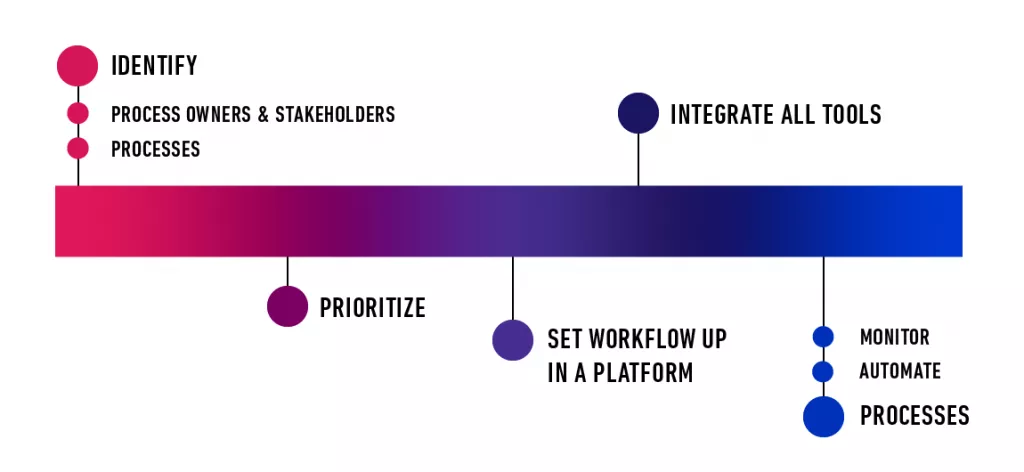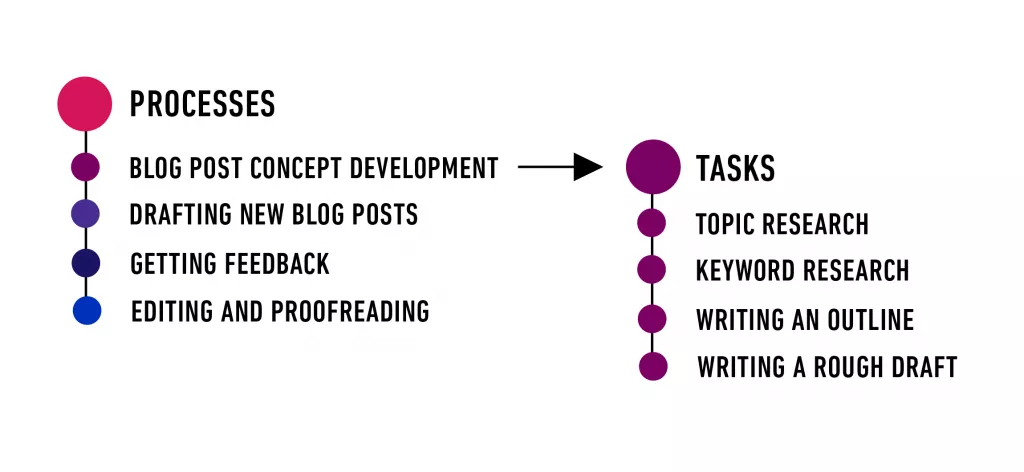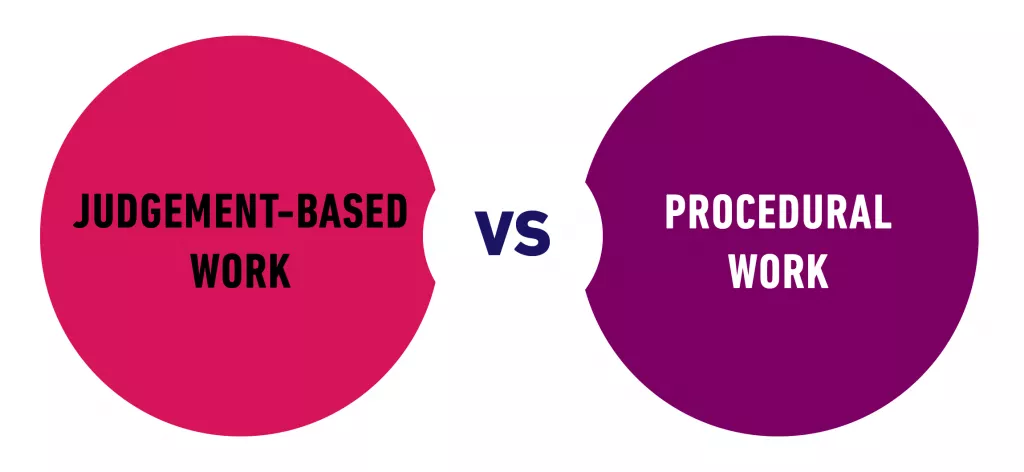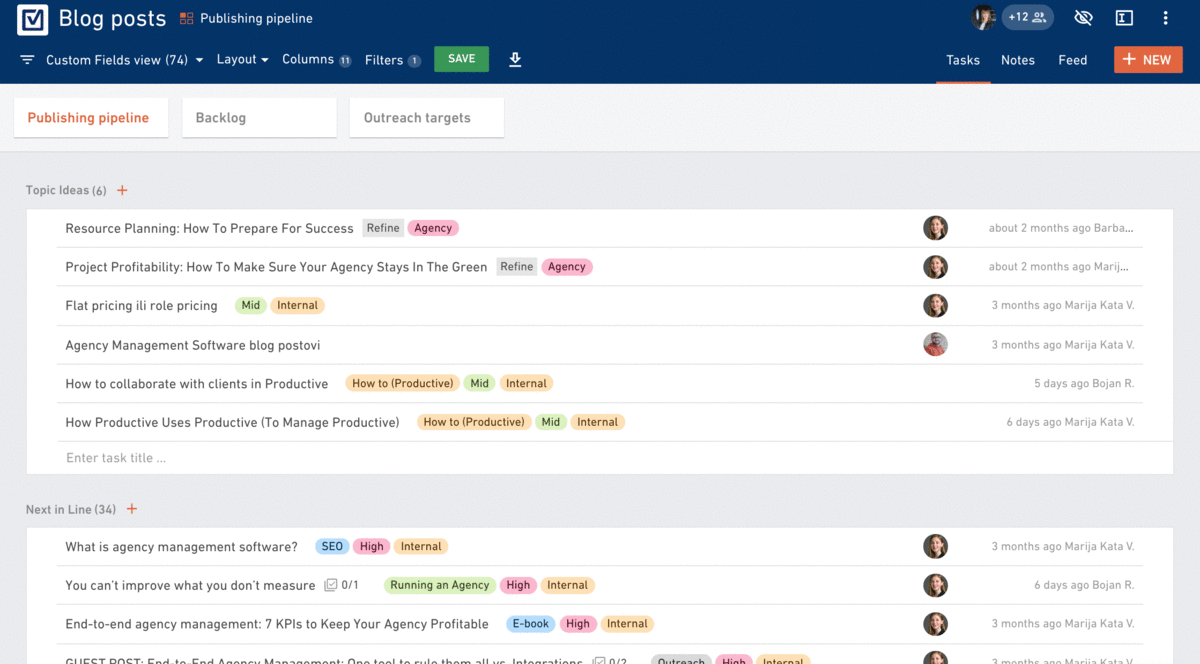How to Streamline Workflow With an Agency Management Tool

In the agency world, ever full of chaos, there’s one thing (besides profitability) worth continually striving for—order.
Since agency workflow usually consists of processes that have a similar start, middle, and end, creating a template for those processes or standardizing them is what any agency should aim for. Especially as it matures.
Think of streamlining processes as laying the foundation for your agency’s growth—and don’t exclude your agency if it’s small in size.
So the question remains: how to streamline workflow in an agency management software? We cover how in seven steps in total for you. Read on.
First: What Does Streamlining Workflow Really Mean?
Streamlining your agency’s workflow essentially means bridging the gap between how your agency business is currently functioning, operationally speaking, compared with how your agency should be working.
Streamlining workflow functions according to simple principles:
Identifying all your agency’s existing processes
Discovering and removing any unnecessary practices
Optimizing your agency’s workflow
Adopting best practices
Streamline Your Agency’s Project Management
Support your team’s daily workflows with an all-in-one agency management software.
Why Does Your Agency Need to Streamline Workflow?
Business process standardization exists to create order within highly complex workflows. When your best practices are templatized and you start delivering projects more efficiently, you’ll quickly start spotting ways to improve the quality of your work even more. It’s only once you have your optimal modus operandi baked into your agency management tool that you can let the real magic happen (that chaos, again).
How to Streamline Agency Workflow?
We’ve broken down streamlining agency workflow into seven general steps:
1. Identify process owners and stakeholders
2. Identify processes
3. Prioritize processes
4. Set your processes up in an agency management platform
5. Integrate all the tools you use into your new workflow
6. Automate processes
7. Monitor newly implemented processes

1. Identify Process Owners and Stakeholders
To streamline workflow in your agency, first you’ll need to identify process owners and stakeholders. Maybe your agency is growing and different roles and responsibilities are currently overlapping. Maybe you have one employee in charge of all communication with customers. Maybe that same manager is supervising each project from beginning to end. As you grow as a company, you need to pay more attention to process owners.
You might be able to divide your entire agency into three groups of employees:
Project managers, who balance external and internal expectations and output
Creatives, e.g. software developers, designers, copywriters
Account managers, who face prospects, existing customers
The more complex creative project ideas become, the more stakeholders usually come up. Whether you are a business of 15 or 150 people, an agency management tool will help you clarify roles and responsibilities.
2. Identify Processes
Once you’ve identified who’s responsible or accountable for which process or project, your next step is to identify which processes you need to streamline. This is a good moment to ask team members from different departments to go through their workflows and give feedback on tasks that are frequently repeated.
Typically, identifying processes will consist of:
Understanding how a process works i.e. which tasks it consists of
Eliminating any unnecessary activities
Improving efficiency of remaining activities
Documenting the optimized process
Setting up the optimized process in your agency management platform
Remember that as you identify bigger processes along the way, you’ll also want to break those processes down into smaller, streamlined processes. This is because certain tasks within processes can be streamlined, too.
Example
Your Marketing Team will have processes such as:
Blog post concept development
Drafting new blog posts
Getting feedback
Editing and proofreading

Each one of these processes consists of multiple, smaller tasks. So, just the process titled “Blog post concept development” alone will entail:
Topic research
Keyword research
Writing an outline
Writing a rough draft
Several of these smaller tasks can be optimized and streamlined as well. It’ll make your employees more efficient and enable them to be more creative.
Methods to Identify Your Processes
One easy way to visualize an entire creative process is by diagramming your workflow and pinpointing any bottlenecks. In this way, you’ll see whether you need to add in a step, or cut out a few.
In case your projects consist of many separate processes and requires different teams to work on them, a good method is to map the process out by stages.
Another clever method to identify processes that you want to templatize is by reverse engineering. The easiest way to do this is remember how a project you’re really proud of successfully made it to the finish line:
Imagine your final deliverable
Understand every action your team needs to perform to get to your ideal outcome
While tracing backwards, ask yourself whether those steps are unique or can be standardized
Identify which processes need to be standardized
Break them down into smaller pieces
Surely, you’ll find some processes you’d like to repeat.
3. Prioritize Processes
Even though your goal should be to standardize all or most of your agency processes for better utilization rates, and consequently, higher profit—it’s unrealistic to expect you’ll be able to streamline everything at once. You need focus on your priorities. Ask yourself: which processes are most important for our agency’s long-term success?
To find out what your most important processes are, it helps to prioritize processes based on two attributes: category of work and KPIs.
How to Prioritize Agency Processes Based on Category of Work
First, divide all the agency work you do into two categories:
Judgment-based work (where you use insight, creativity, critical thinking and instinct to produce deliverables)
Procedural work (where you perform different processes every time you need to deliver something)

Of course, streamlining judgment-based work is not exactly a piece of cake, so it’s important to make a difference between the tasks that can easily be standardized and those which, well, can’t.
How to Prioritize Your Agency Work Based on KPIs
Now it’s time to ask yourself: what are my agency’s most important metrics? Which processes are bringing in the most profit? In agencies, utilization is a metric that’s crucial for maintaining profitability. Low utilization rates will indicate that your teammates are spending too much time on non-billable work. How much time is your agency spending on billable, and how much on non-billable work?
If your entire team tracks time properly, you can check those metrics out in real time in an end-to-end agency management platform.
4. Set Your Processes Up In an Agency Management Tool
Now that you’ve identified your process owners and stakeholders, processes and priorities, you’ve got what it takes to streamline your workflow in your agency management platform. To do this, first you need to choose a layout that suits you and your team best.
In Productive you can choose from a list view, board view, calendar view, and table view. You can also customize your own view. Each project workflow layout can get even more specific when you apply columns and filters.
Tasklist layout lets you view each projects’ tasks as a list.
Board view enables you to visualize workflows as grouped tasks and task lists in different project stages, as opposed to having only one long task list. Learn more about how to organize your projects in multiple boards in Productive.
Calendar view helps you visualize deadlines for tasks coming up within a project.
Table view is a great alternative to spreadsheets because it organizes teammates, tasks, due dates, and other information in neat rows.
Custom fields let you create a customized layout that fits your project’s workflow and priorities to enable efficiency or work in phases.
Example
Let’s go back to your Marketing team. Let’s say Marketing runs a project called “Blog posts”. Blog post creation is a typical process that follows a pipeline type of workflow, starting with finding topic ideas to publishing and promotion. So, the ideal layout for blog post concept development and publishing will most likely be a customized board layout to cover the entire publishing pipeline. But hey, you can choose a task list or table view, too.

5. Integrate All the Tools You Use Into Your Workflow
As soon as you’ve set up your agency’s processes, it’s time to amplify your efficiency by bringing all the tools you use together—that is, if you’re using any additional tools to manage your agency. Using integrations, add your Google or Apple calendar into Productive, or connect to projects in Jira. This way, you’ll ensure everything your team needs is in one platform, which will improve focus, instead of switching between different applications every few minutes.
6. Automate Processes
One of the goals of standardizing processes is to automate some of them, too. Don’t let repetitive tasks take the best of your energy. To relieve your team of unnecessary bottlenecks, map the workflows you identified as priority in your project management tool. This will allow anyone working on a project or in your team to review which stage you’re in. Templates can help you in your efforts to streamline processes. Automate tasks that regularly reoccur and save your team time setting up each project.
The one thing that we never had before that I really like is the ability to almost templatize our projects. We created a sample project that has all of our standard processes built into it. Whenever we start a new project, it’s something we can clone. That’s a huge advancement in terms of trying to have a consistent process across the company, and one that everybody follows. In the past, we used a giant document that people had read, looked at, or completely ignored. Since the process has been baked into the tool and we clone it, the chances of people following the process and not missing critical details has been a huge win.
7. Monitor Newly Implemented Processes
Streamlining your processes goes full circle. Once implemented, you need to monitor your newly standardized processes and evaluate how effective they are. Ask yourself: are our teammates more productive, are they better utilized? Make sure to set some time aside to identify whether your agency has adopted new practices, developed a new service, or simply reevaluate your workflow.
Need Help Streamlining Your Project Management Process Flow?
Templatizing your agency’s processes will undoubtedly lead to better overall organization and dedicating time to improving and expanding your services. As you grow as an agency, your workflows will change, which will encourage you to revise and continually optimize them.
Though it takes time to identify, prioritize, and streamline your agency’s best practices, keep the benefits of streamlining your workflow in mind:
Streamlining workflow captures the efficiency of best practices
Streamlining workflow improves consistency and accountability
Streamlining workflow reduces errors
Streamline Your Agency’s Project Management
Support your team’s daily workflows with an all-in-one agency management software.



